Colebrook House: The serene English country garden with a touch of Tuscany
From the new Italianate walled garden, paths and bridges lead on through the endlessly exciting garden of Colebrook House, Blockley, Gloucestershire. Tiffany Daneff paid a visit; photographs by Jason Ingram.
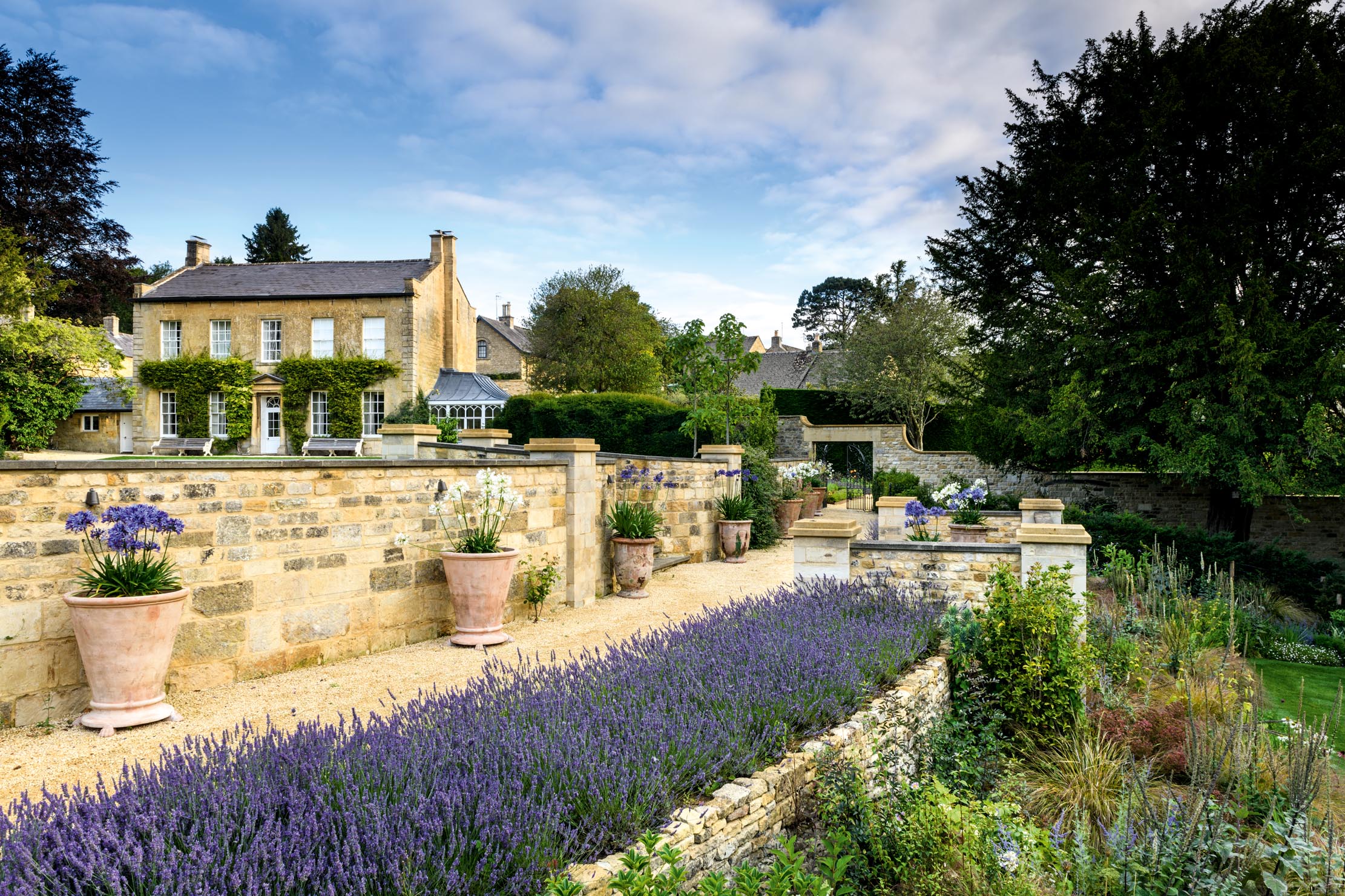
One would never guess from the street that there would be so much to discover in the garden behind Colebrook House, a Grade II- listed, 17th-century Cotswold-stone building. It would be charming, of course (the village of Blockley was the setting for the ‘Father Brown’ series), with a narrow stream, the Cole Brook, running prettily along the leafy front garden before disappearing in a sudden rush into the ground. But no one ever anticipates the size of the garden nor the series of surprises that await behind the high walls.
Gardens are the result of a combination of influences, the most important of which are its location and its owners. In this case, both have united to produce many delightful and entirely unexpected effects, the first being the new Italian-influenced walled garden that slopes away from the terrace outside the kitchen and down towards Blockley Brook, which runs along the bottom of the garden.
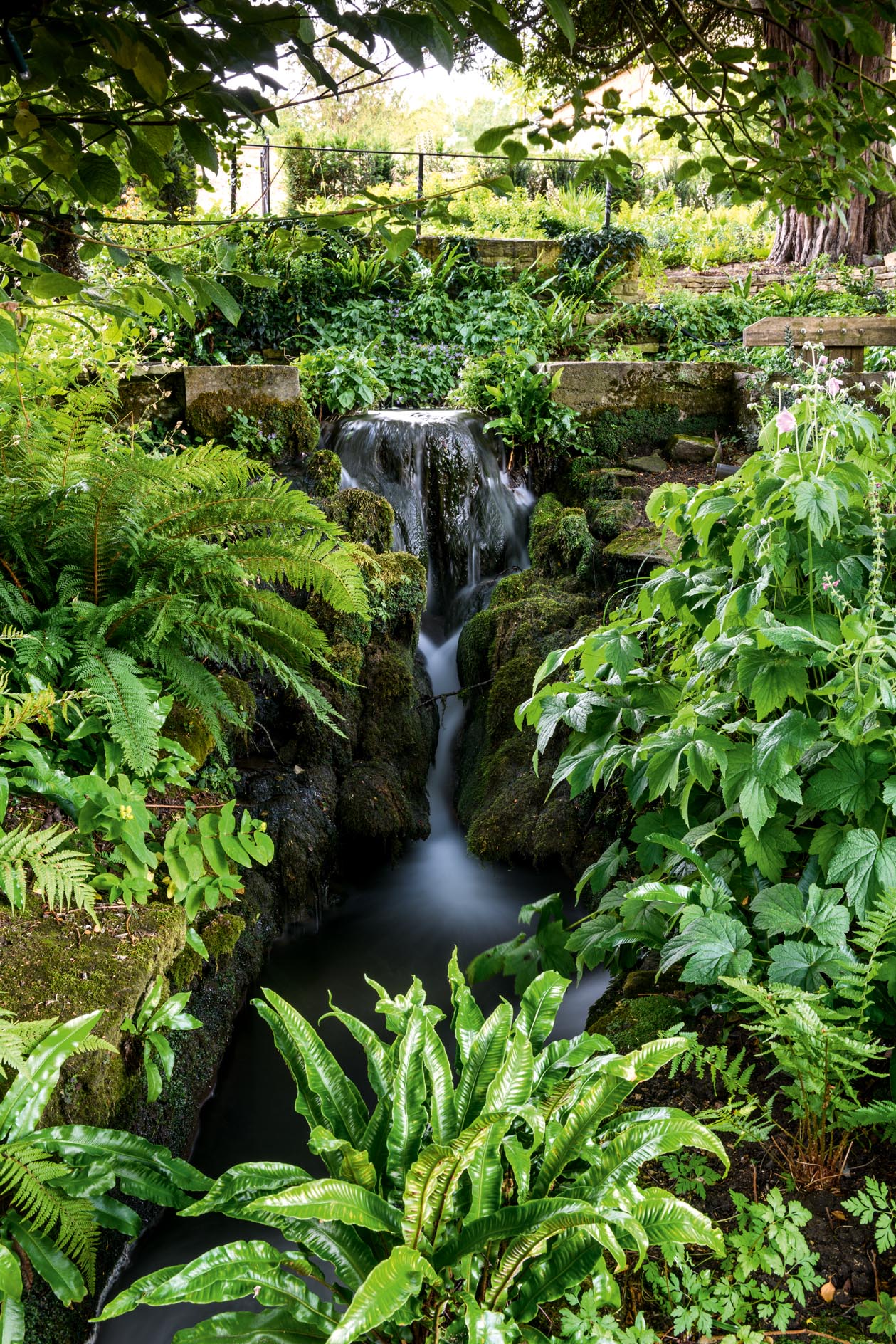
Parallel to the street, and fed by the aforementioned Cole Brook, this clear-running trout stream is the reason the village was the centre of the silk industry in the 18th and 19th centuries. It also results in a garden that slopes down from the house to the brook and, via two rustic bridges, continues steeply up the opposite bank to the treeline.
‘We’re very keen on Italy and had spent a wonderful time at a beautiful hotel, l’Andana, in Tuscany, and definitely wanted elements from that in the walled garden,’ says music producer George Apsion. With his wife, Melissa, who has a background in fashion and design, he moved to Gloucestershire from London with their young family three years ago.
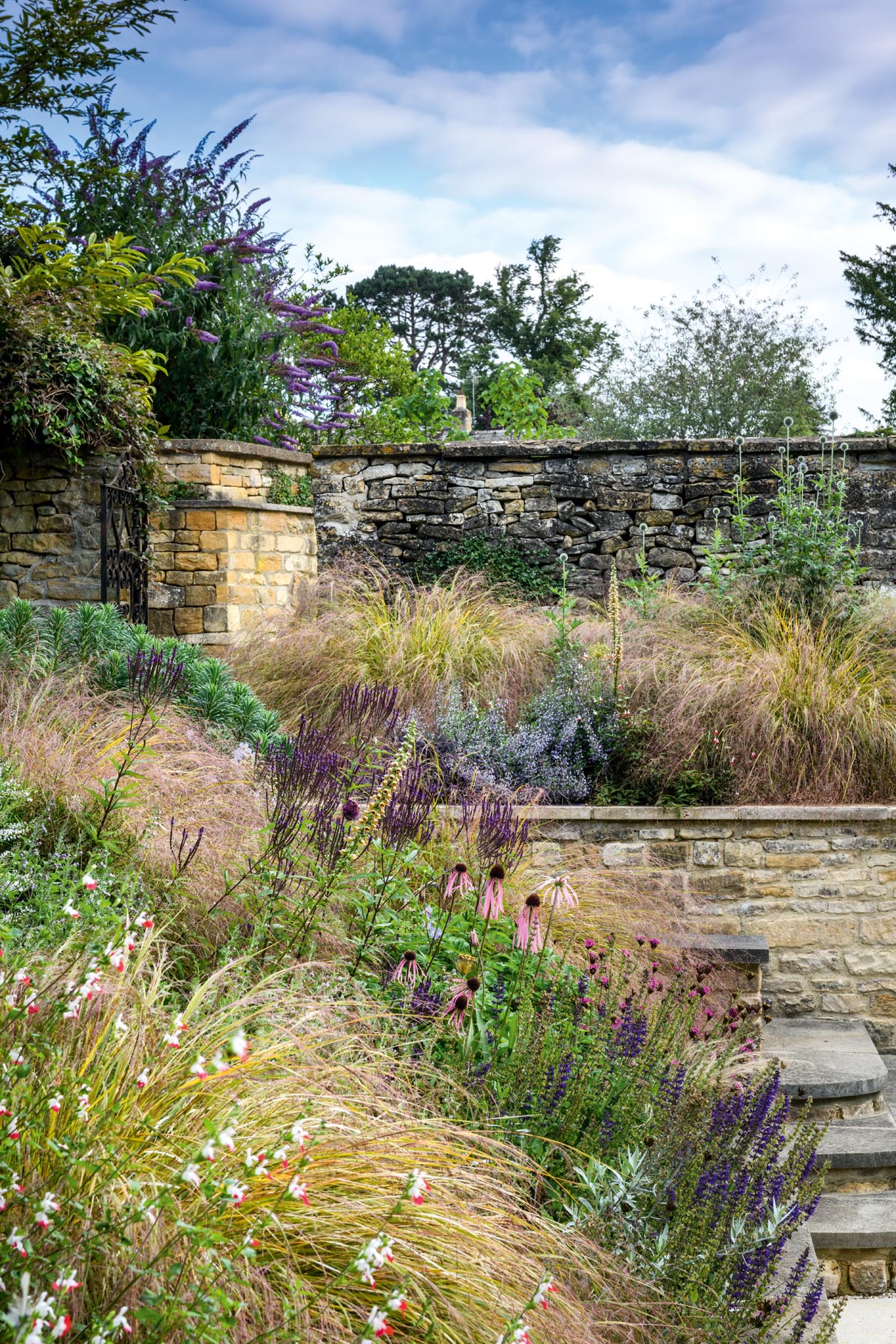
Great gardens were something Mr Apsion had grown up with, from childhood visits to his grandfather in Cheshire to the historic gardens at Hodnet Hall in Shropshire, where his aunt and uncle live. ‘That faded when I was in London and sparked again when we came here,’ he says. Now, he is very much the driving force behind the garden’s reimagination. In this he has been guided by landscape architect Todd Longstaffe-Gowan — an inspired introduction by the Apsions’ architect.
Remembering his first impressions, Mr Longstaffe-Gowan describes a garden with an open feel that ‘tumbled down the slope in a rather undistinguished way. There was nothing wrong with it. There were simply some incomplete gestures that needed some coherence’. Key to that was defining the terrace that now runs across the top of the garden and, with its honey-coloured gravel paths, lined with terracotta urns, joins the house to the lawns, the swimming pool and beyond to the chicken coops.
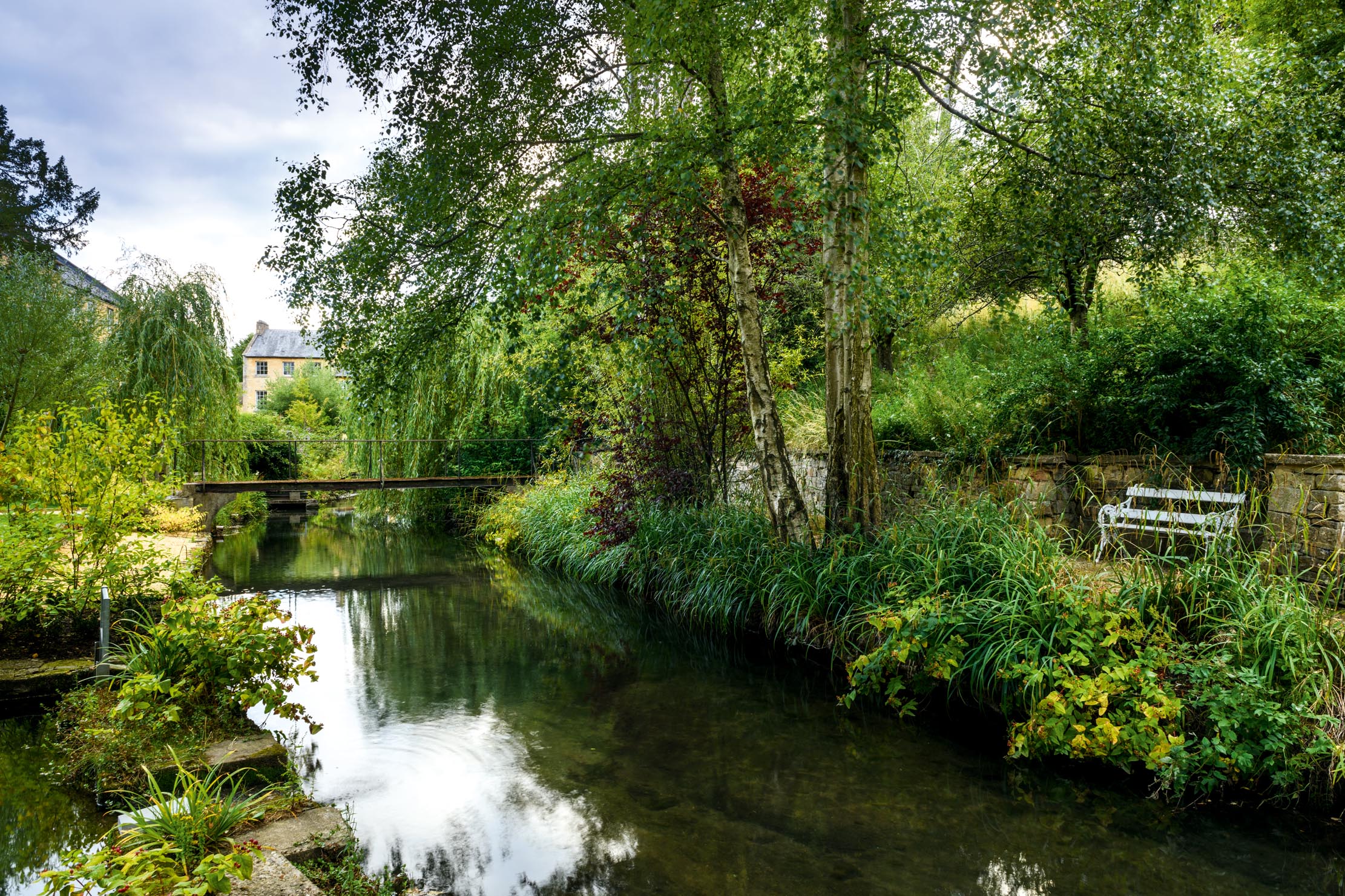
Also important was to link the garden to Blockley Brook, which has been achieved through better defined paths towards the two bridges that lead to the far bank, where Mr Apsion is sowing wildflowers on the steep slopes. Mature trees give the deep-set brook and its brown trout welcome shade as a sinuous path entices the visitor up to the treeline and the garden’s boundary.
Sign up for the Country Life Newsletter
Exquisite houses, the beauty of Nature, and how to get the most from your life, straight to your inbox.
Together with these improvements came the making of the walled garden. There are plenty of people restoring old walled gardens, but precious few with the vision to make a new one with such elan. Previously, there had been a vegetable garden that tailed off towards the brook in a mass of nettles. This has been replaced with parterres edged with Ilex crenata and filled with cutting flowers (including Baptisia ‘Dutch Chocolate’, B. var macrophylla, Agrostemma githago ‘Ocean Pearl’ and Penstemon ‘Sour Grapes’), as well as herbs and vegetables. The beds are separated with gravel paths that echo the honeyed top terrace and confirm the Italian influence.
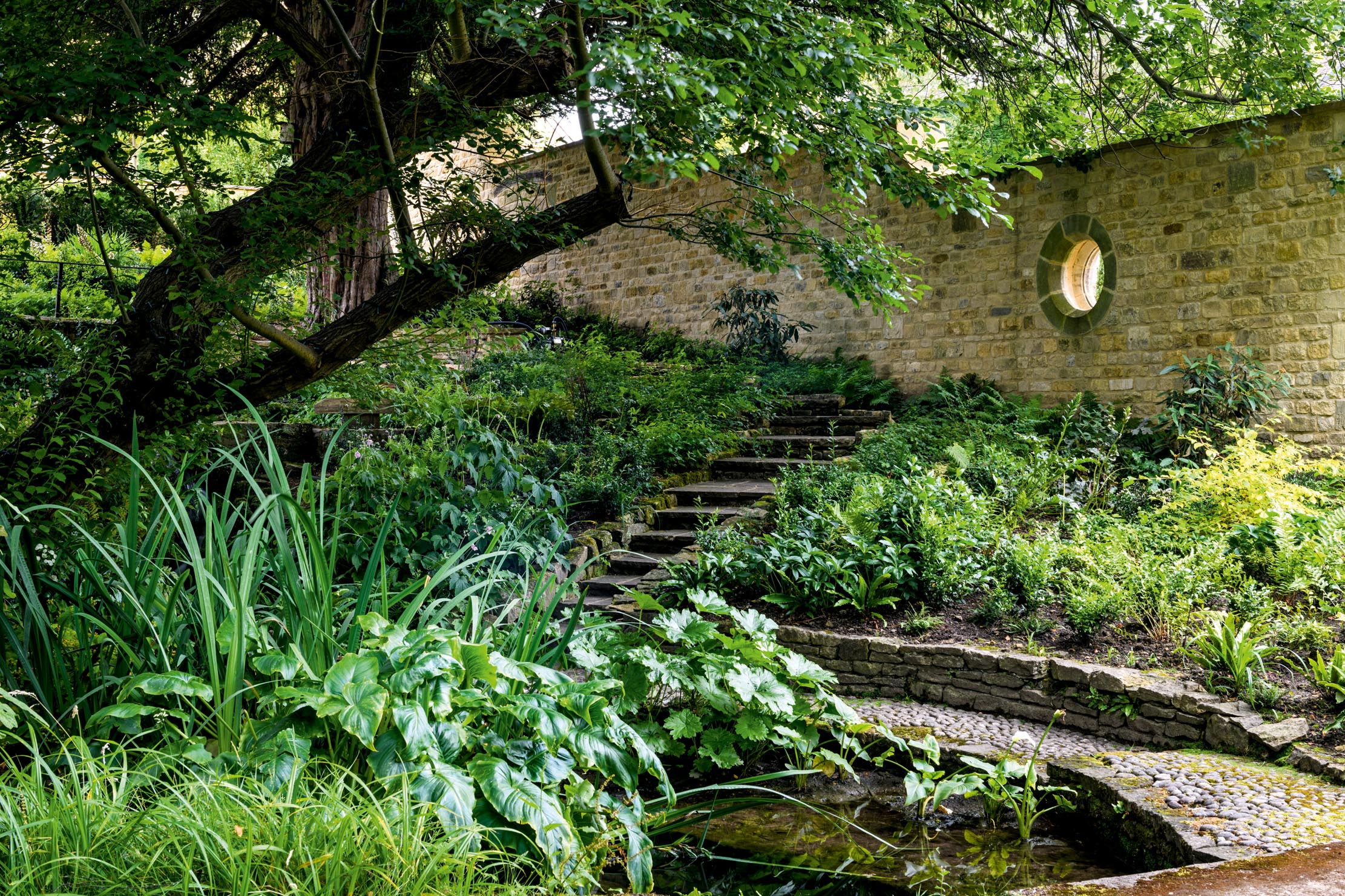
Off-centre fastigiate yews rise from the kite-shaped central beds in a deliberate subversion of formality, at the insistence of Mr Longstaffe-Gowan. In much the same way, he encourages the gardeners ‘to let rip a little’ so Nature can take its course, allowing the roses to tumble over the wall at the end of the parterre. He dissuaded Mr Apsion from arranging the yew blobs on the top lawn in a straight row, encouraging him to stagger them instead.
‘I’m trying to make the garden more dense and more magical,’ he explains, ‘and full of contrasts.’ This it certainly is. The first hint comes with a small round window set in the right-hand wall. Stepping stones beckon one through a bed of English roses and there, suddenly, one discovers a completely different world of cool green shade, where water crashes down through banks of ferns, splashing over rocks and stone. This is Cole Brook, which, having flowed out of sight under the lawn, makes its bold reappearance rushing headlong down to the mill pool to join Blockley Brook. Steps follow the Cole’s descent (accessed from both top and bottom) and lead through airily limbed trees underplanted with hart’s-tongue ferns, sweet woodruff, rodgersia, cyclamen, Japanese anemones, Vinca ‘Gertrude Jekyll’ and Solomon’s seal.
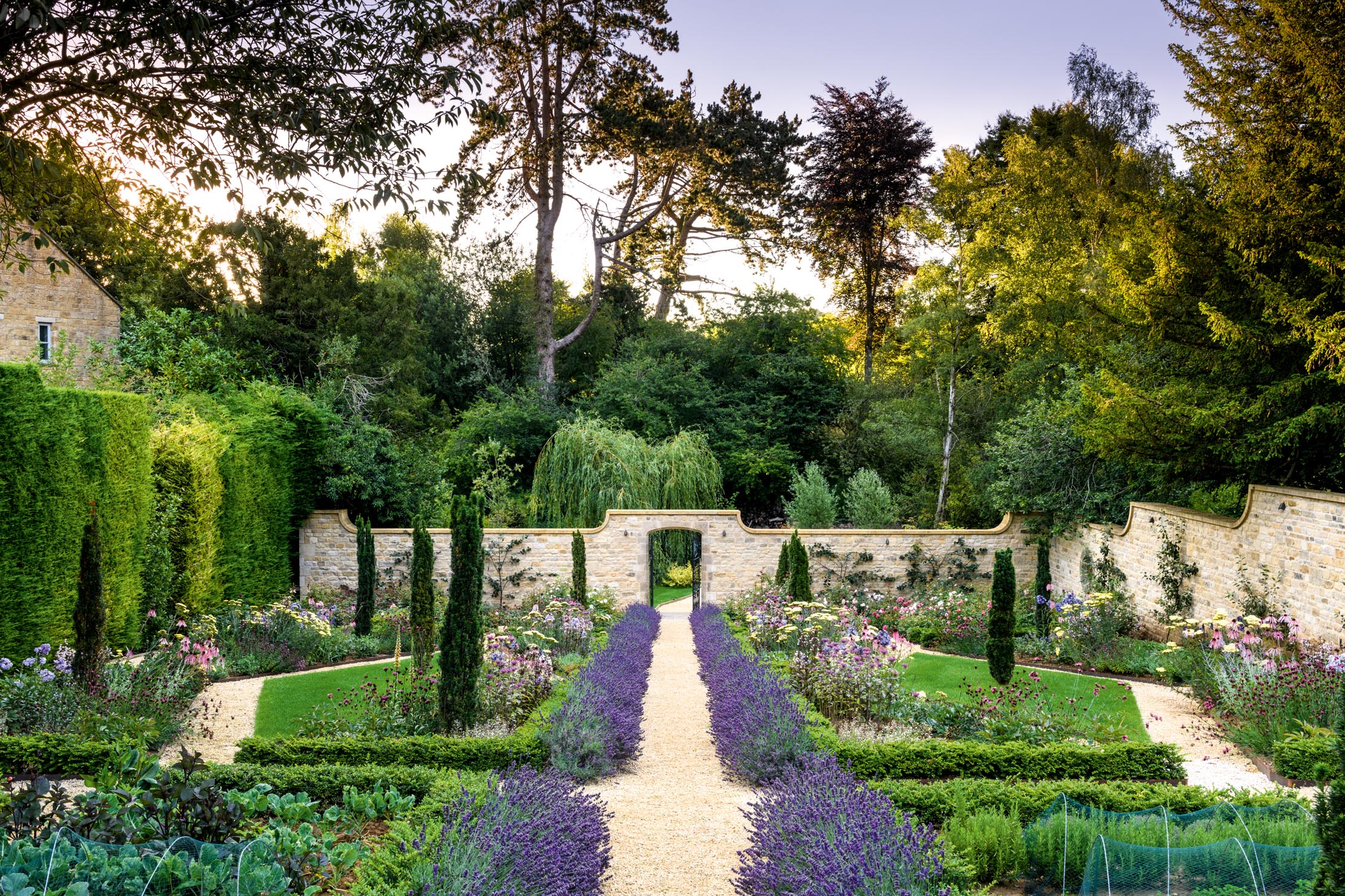
Together with the fine quality of the hard landscaping, the judicious tree work (much-needed editing and pruning, plus planting of new specimens, such as a Cedar of Lebanon) has provided the direction and definition the garden needed to take it to the next level. Flowerbeds and borders have been replanted and those around the swimming pool are boosted with more structural plants, such as euphorbias, rosemary, Ilex crenata, pheasant grass, hoheria and caryopteris.
Supported by this framework, smaller domestic areas are easily accommodated. Swings for the children stand near one of the ancient mulberries, a small boat is tied to the bank and just beyond is the young orchard.
The initial build may be complete, but the ideas continue to flow. Only this year, 12 15ft Magnolia grandiflora have been installed behind the high yew hedge that is the left-hand boundary of the walled garden, with the idea that they will eventually replace it. Mr Apsion also has his sights on a glasshouse, where he can develop his enthusiasm for horticulture, as well as housing exotics for winter interest.
However, final mention must go to the new area he is developing by the orchard. Here, next to Blockley Brook, a sundial marks the centre of a circle of mown grass where one can sit on curved stone benches surrounded by a small meadow that is being planted with masses of bulbs, camassias and, eventually, a forest of foxgloves. Its inspiration? Tenniel’s caterpillar smoking his hookah.
Colebrook House, Blockley, Gloucestershire, opens for the NGS — www.ngs.org.uk
Colebrook House's little black book
- Magnolia grandiflora from Lorenz von Ehren, Hamburg, Germany — www.lve-baumschule.de/en
- Building and planting works by Johnstone Landscapes, Wiltshire — www.johnstonelandscapes.co.uk
- Design advice from landscape architect Todd Longstaffe-Gowan— www.tlg-landscape.co.uk
- Stone for pathways from Oathill Quarry, Gloucestershire — www.jqgroup.co.uk
- Walls built by Robin Muller of Cotswold Stone, Gloucestershire — www.cotswoldstone.com
- Victorian-style cloches from Claverton Cloches, Bath — www.clavertoncloches.com
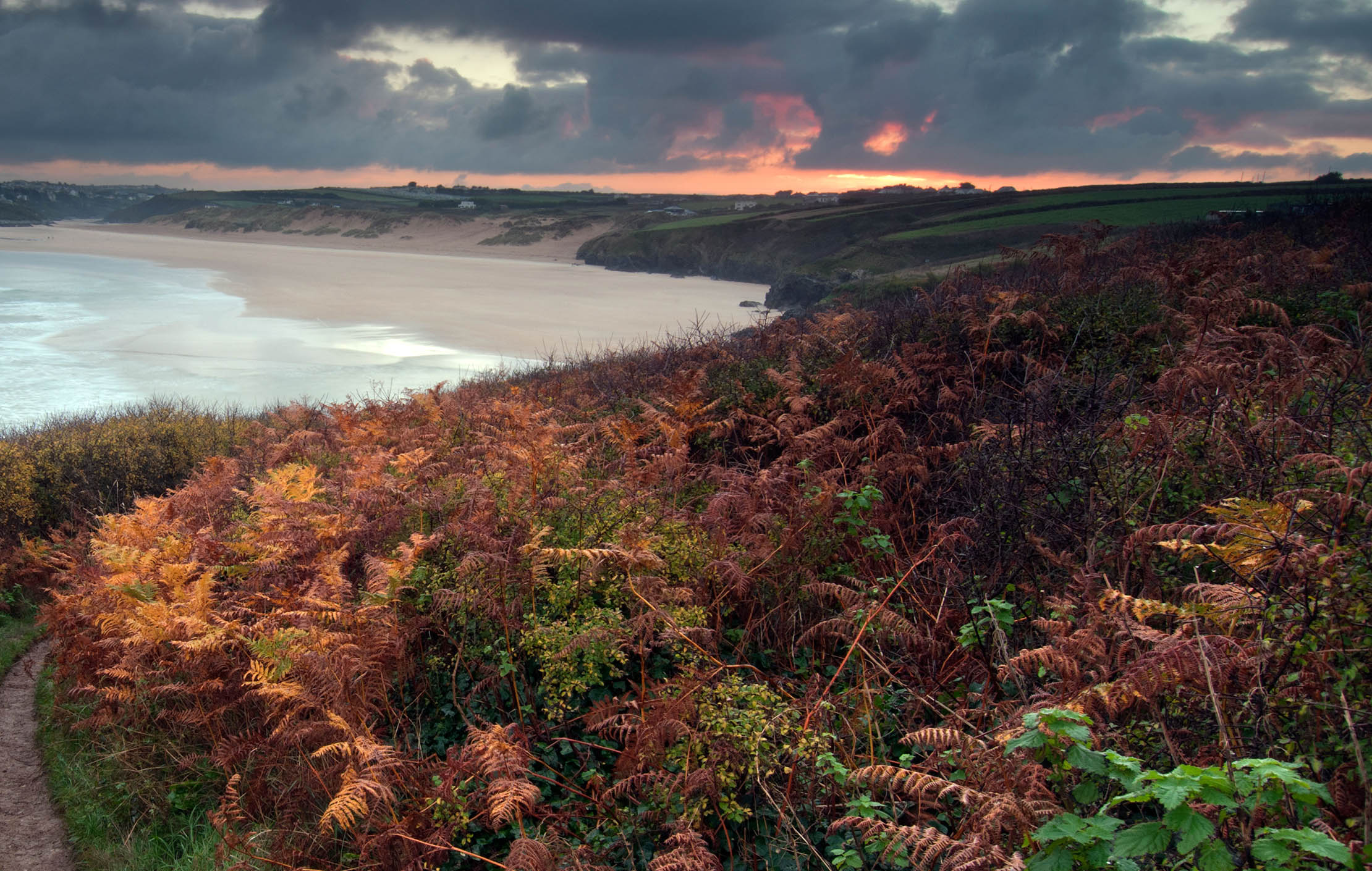
Where to see ferns: Six of the most spectacular places in Britain
Country Life's gardens editor Tiffany Daneff picks out some of the finest ferneries in Britain.

Credit: Alamy
How to 'garden' in a home that doesn't have a garden, from window box tips and indoor plants to helping out the bees
Country Life's gardens editor Tiffany Daneff shares her tips for window boxes, indoor plants and hanging baskets — and shares a
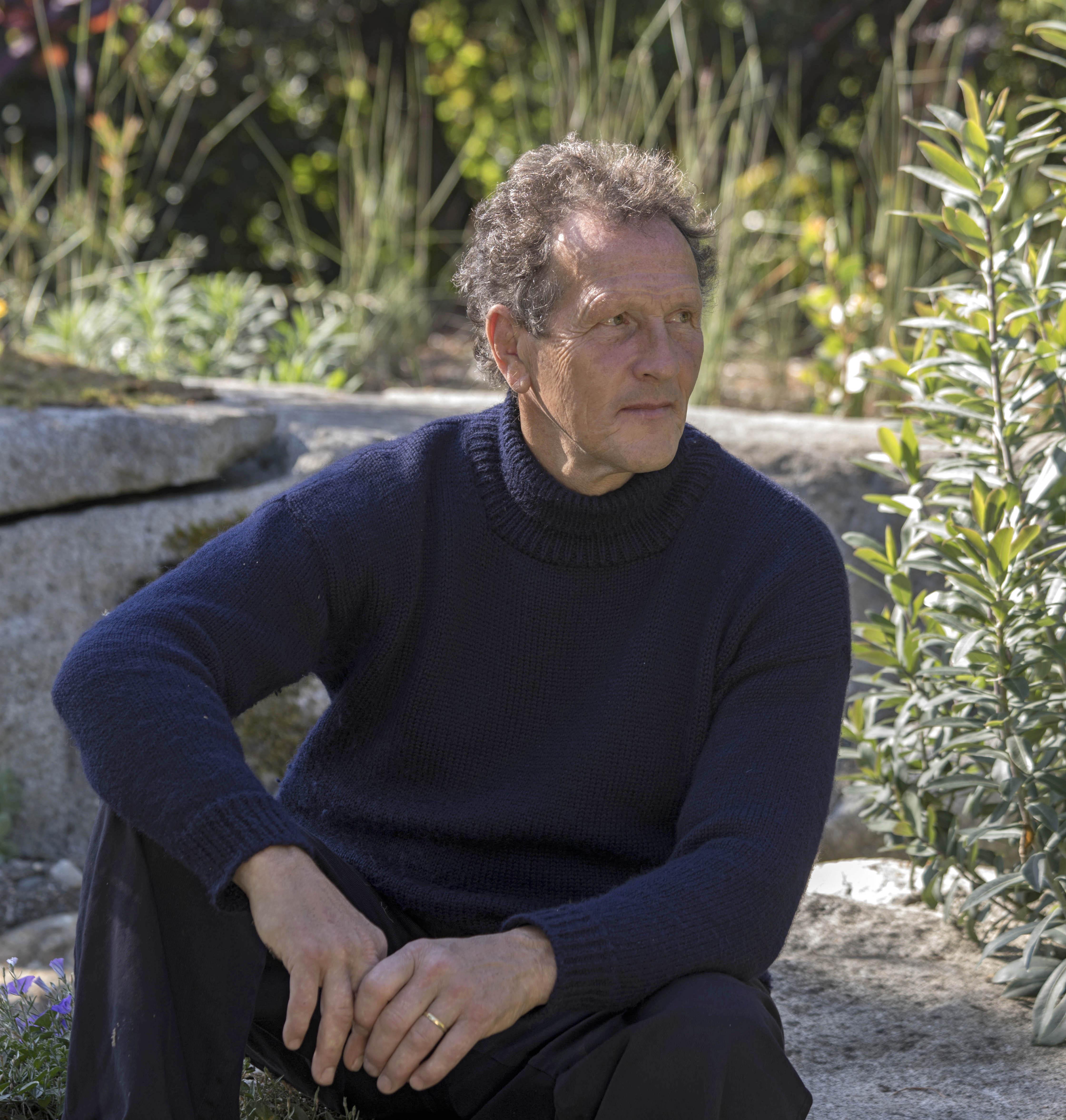
Monty Don: The point of gardening? It's to find solace, to be happy, to make beauty, have fun and muck about. How you do it doesn't matter.
Monty Don, gardening writer and broadcaster, speaks to Country Life’s Tiffany Daneff about dogs with film presence and the lockdown
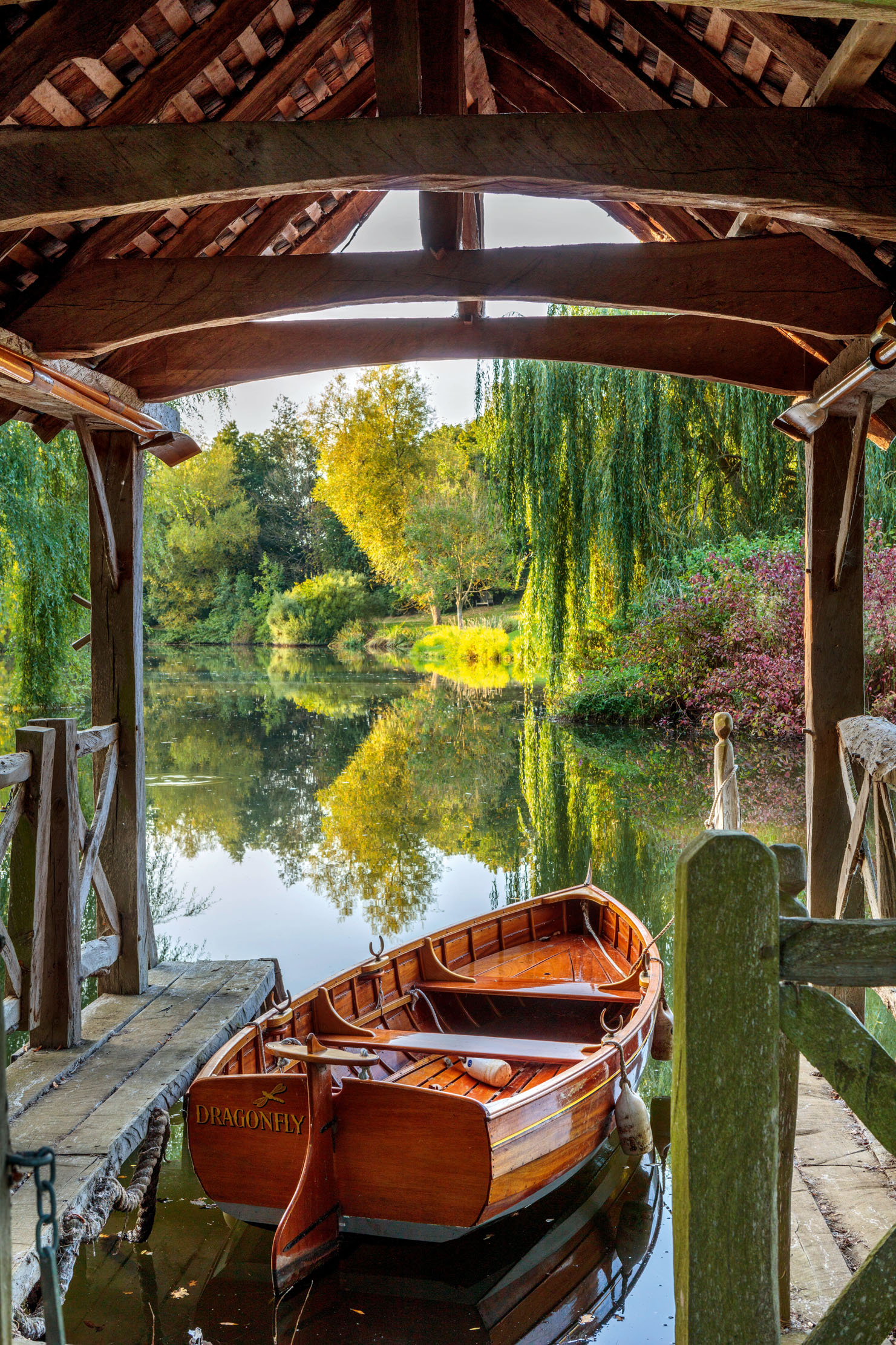
The Gardens at The Manor, Priors Marston: A house bought on a same-day impulse that became a 20-year labour of love
The inspiration for the garden of The Manor, Priors Marston, Warwickshire, was to create a landscape to meander through, with
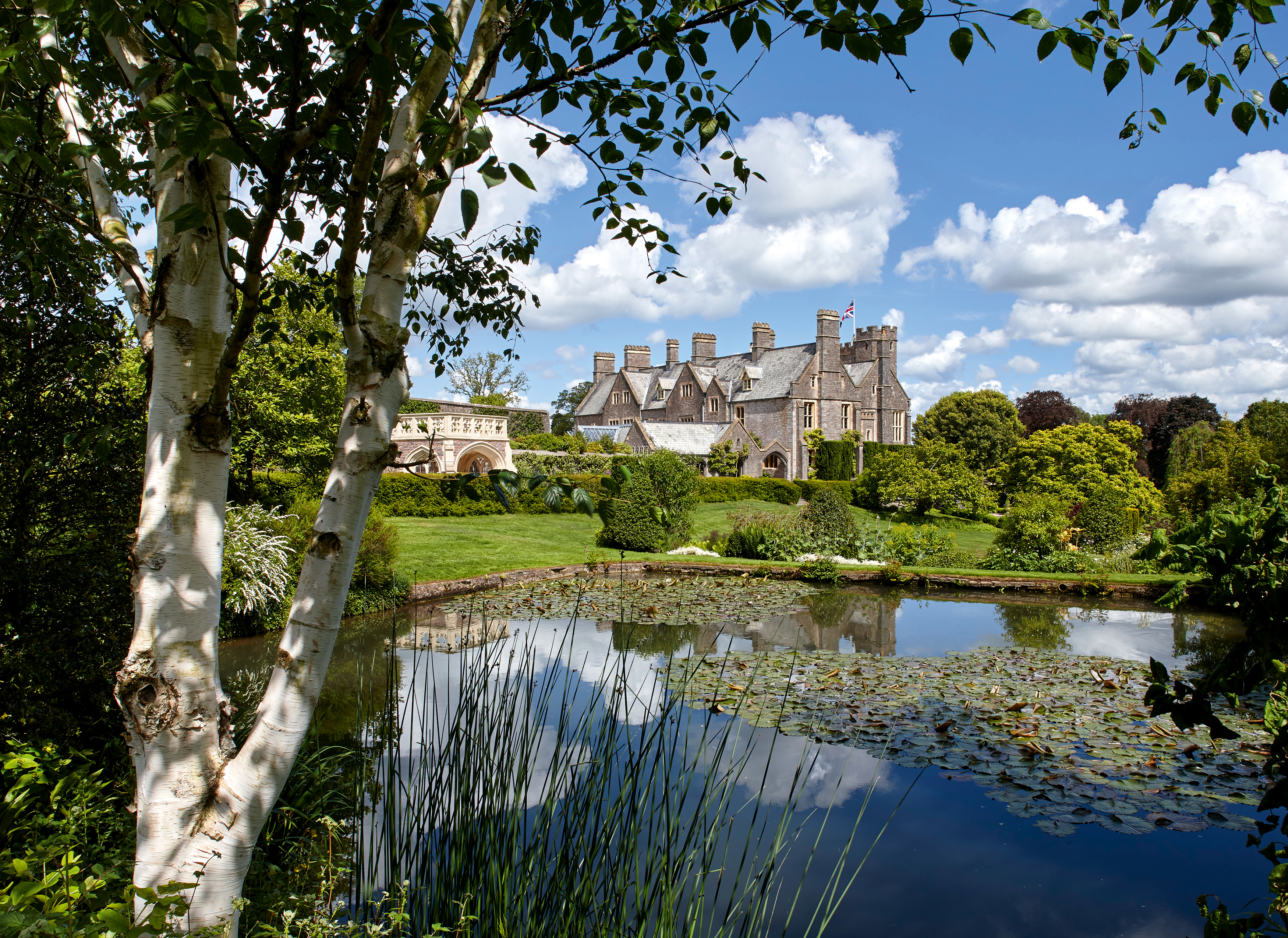
The gardens at Holcombe Court, where the team was told to 'plant whatever you like, as long as it's not pink'
Restoration of the historic gardens at Holcombe Court, Devon, has been a slow and thoughtful process that harnessed the individual
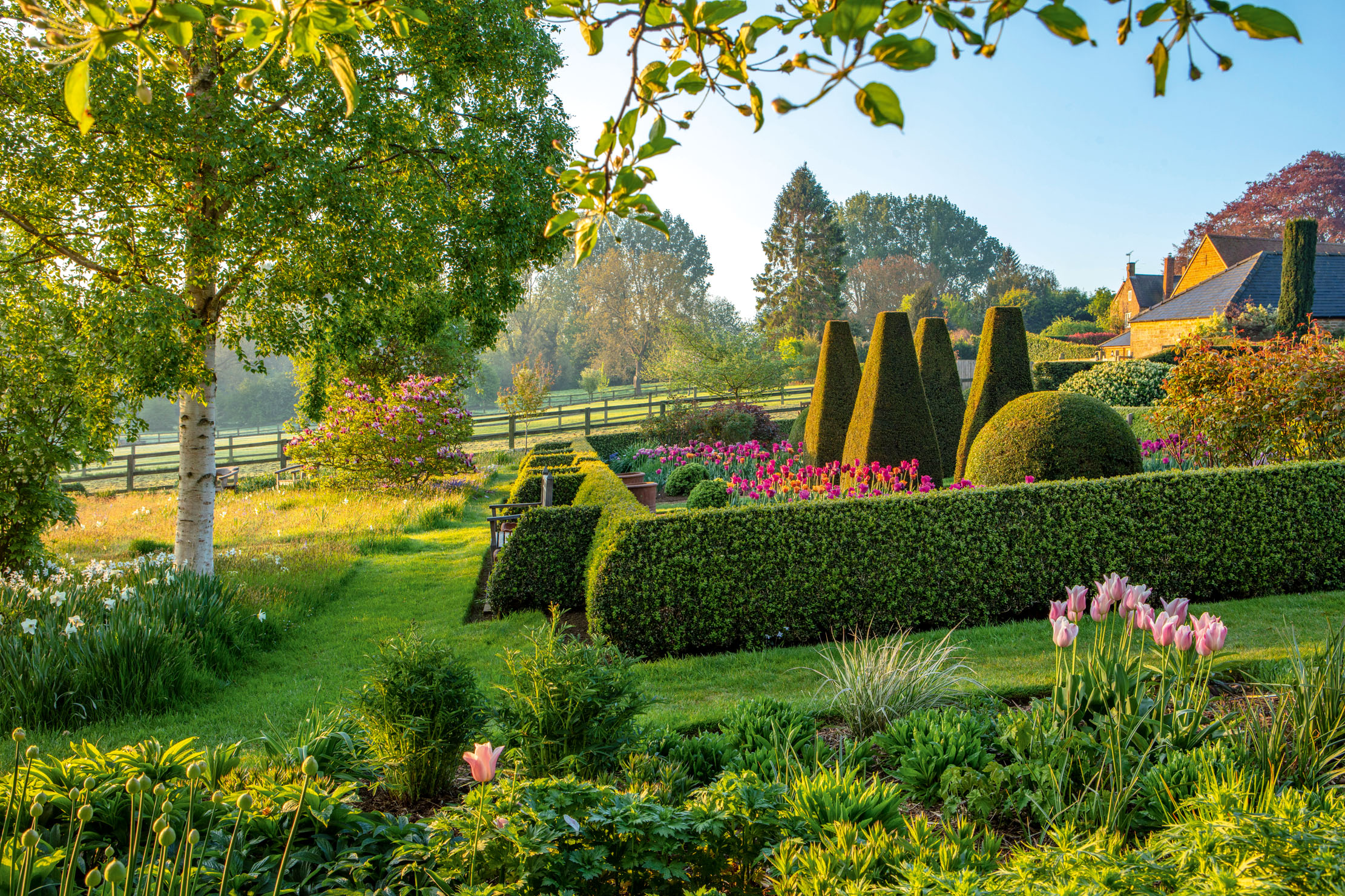
Pettifers: The breathtaking Oxfordshire garden born from the impeccable instincts of Gina Price
An Oxfordshire garden famous for its high summer and autumn borders sparkles with just as much interest and invention earlier
-
 Five beautiful homes, from a barn conversion to an island treasure, as seen in Country Life
Five beautiful homes, from a barn conversion to an island treasure, as seen in Country LifeOur pick of the best homes to come to the market via Country Life in recent days include a wonderful thatched home in Devon and a charming red-brick house with gardens that run down to the water's edge.
By Toby Keel Published
-
 Shark tanks, crocodile lagoons, laser defences, and a subterranean shooting gallery — nothing is impossible when making the ultimate garage
Shark tanks, crocodile lagoons, laser defences, and a subterranean shooting gallery — nothing is impossible when making the ultimate garageTo collectors, cars are more than just transport — they are works of art. And the buildings used to store them are starting to resemble galleries.
By Adam Hay-Nicholls Published